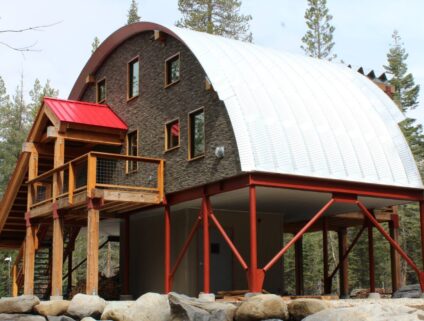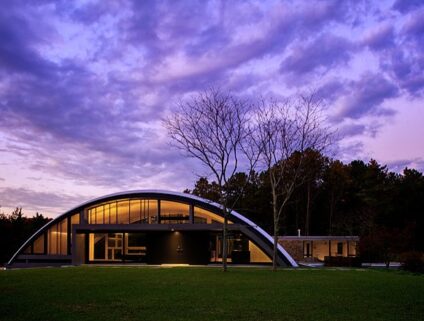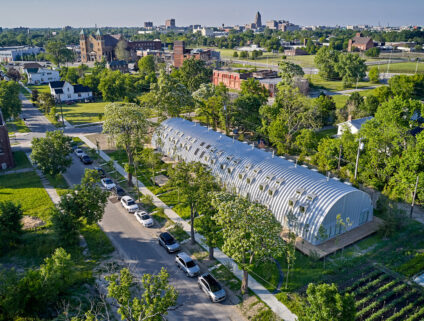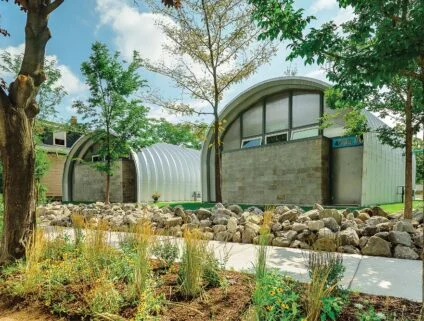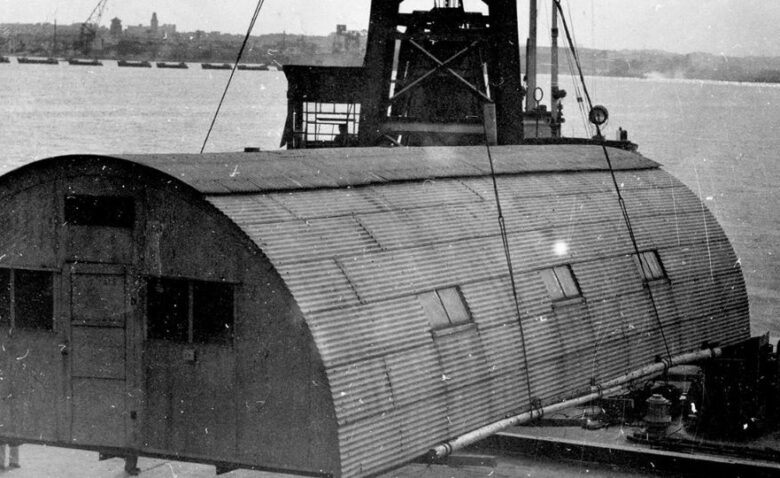
Quonset Hut History
Quonset Hut History: From The Roman Arch To World War II & Beyond
For over seven decades, the strength of the Quonset hut continues to serve both families and businesses all over the United States and around the world.
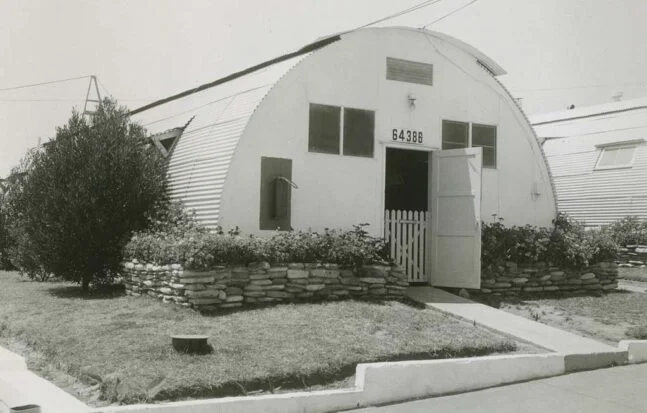
Who invented the Quonset hut and when?
The George Fuller construction company is credited with being the first company to manufacture Quonset huts on behalf of the US Navy in 1941. The exact inventor or designer isn’t known, but the design is based on the Nissen Hut design that originated from World War I.
In World War II, the U.S. Navy needed buildings that could be quickly assembled and disassembled but could withstand the rigors of the military and the Quonset hut was created. In essence, the Quonset hut wasn’t necessarily invented but was a vast improvement of the Nissen Hut.
Why did the U.S. Navy use Quonset huts?
The U.S. Navy wanted an all-purpose building that was lightweight, easy to ship and easy to assemble. On top of that, Quonset huts have several key advantages that made them the obvious building of choice in World War II.
Clear span interior
With no structural support poles or walls, Quonsets allow for unobstructed building space.
Strength of building
By using steel, Quonset huts have undeniable strength.
Quick construction
Steel Quonset huts are designed to be produced and assembled as kits, they take minimal time to erect.
Portable
Quonset huts can be assembled, disassembled and moved to different bases depending on their need.
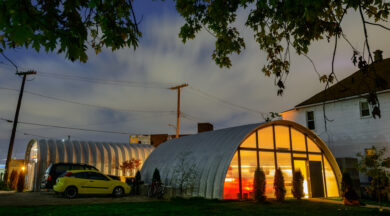
Ready to get started?
Fill out the form below to get a free project consultation
Form Capture Name in CRM: English - Contact Form
"*" indicates required fields
By adding my phone number, I agree to receive recurring text messages at the phone number provided from SteelMaster Consent is not a condition to purchase. Carrier & data rates may apply. Message frequency may vary. Reply STOP to cancel. Reply Help for more information. View our Terms of Service for details.
How did the Quonset hut get its name?
The Quonset hut is named after the location it was first built, the Davisville Naval Construction Battalion Center at Quonset Point, Rhode Island. This proved to be a valuable and strategic location for the Navy, with the Construction Battalion Center creating Quonset huts for the surrounding Camp Thomas, Camp Endicott, the Advanced Base Depot, and the Advanced Base Proving Ground as well as creating them to be shipped around the world.
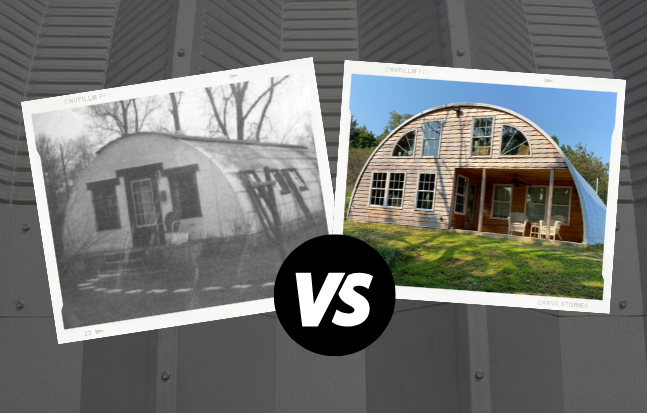
What’s the difference between a Quonset hut and a Nissen hut?
Named after its inventor Lt. Colonel Peter Nissen, a Canadian officer in the Royal Engineers during the First World War, Nissen huts are similar to Quonset huts in form and function but are generally smaller with simpler designs.
Quonset hut FAQs
What are Quonset huts made out of?
An arch building can technically be made out of almost any material, but for strength, longevity, and low maintenance, Quonset huts are exclusively made out of steel. While tin and aluminum can work to provide cover for a building, they do not stand up to the rigors of weather or natural disasters, or in the U.S. Navy’s case, war. Steel also allows for Quonset huts to be virtually indestructible with SteelMaster Quonset huts getting HVHZ approval for hurricane zones.
How long will Quonset huts last?
Due to Quonset Huts being made out of steel coated with anti-corrosive agents and their inherent structural strength, they can last a lifetime. Further, their disaster-resistant design allows them to withstand punishing weather that would destroy a standard building. SteelMaster so believes in Quonset hut’s long-lasting strength that it offers customers a 40-year warranty on all Quonsets sold.
How have Quonset huts changed since they were invented?
Quonset huts have continued to improve since their inception. For example, upgrades in building materials, such as advancements in steel production and anti-corrosive coatings, have increased the durability. SteelMaster Quonset huts are also now produced with 100 percent recycled steel, so Quonset huts have become an environmentally friendly choice for buildings.
The Navy found many advantages when they used Quonset huts, like flexibility, portability, and durability. SteelMaster took this design from the 1970s, combined the architectural strength of the arch with modern technology, and made structures strong enough to support the heaviest snow loads and able to survive the strongest winds, even a category 4 hurricane!
Will Quonset huts continue to be popular?
When you compare a Quonset hut to a traditional building, the advantages of a Quonset hut become clear. Cost, ease of construction, customizability, and durability are all better with a Quonset.
Further, because Quonset huts are versatile, they can be used in any application. Garages, workshops, warehouses, storage, and even homes, can be created with a Quonset hut. Add to all this that they are environmentally friendly by using recycled steel, and Quonset huts are expected to be even more popular in the years to come.
Why are arch-style buildings so influential in architectural history?
For thousands of years, builders have used different types of arches in architecture to create some of the most spectacular structures on earth. Now SteelMaster’s modern arch panel system is being used by designers to create structures that are just as aesthetically pleasing and timeless.
Curved-style buildings have been changing the landscape of areas all around the globe. Architects have been utilizing the inherent advantages of barrel vaults, exposed architecture, archways, segmental arches, curved beams, Tudor arches, and Quonset Huts themselves to enhance the utility and looks of their designs.
Who first took advantage of arches in architecture?
The first to take full advantage of the arch were the Romans. During this time, builders constructed buildings based more on the vernacular architecture of the era. Roman building design relied on tradition and community knowledge rather than on the skills of one particular specialist.
Many structures that were based on vernacular architecture in other cultures were created with materials that could not survive long periods of time, but the Romans created most of their buildings from concrete. They combined mortar with an aggregate like brick to make the concrete that created the buildings that have stood for thousands of years.
How do arches meet architects’ design needs?
There are several theories that dictate exactly what earns a building the stamp of approval from the architectural world. One of these theories is called the Seven Lamps of Architecture created by art critic and theorist John Ruskin. The Seven Lamps of Architecture theory uses sacrifice, truth, power, beauty, life, memory, and obedience to determine which structures are worthy to be placed in the “good architecture” category.
This theory has been demonstrated through some of the modern Quonset Hut designs of today. Architects have used steel in conjunction with other building materials to create curved roof structures that have wowed onlookers and other designers. Using mixed materials allows them the ability to create a building that showcases the aesthetics of architecture while also ensuring the building is strong enough to endure just about anything.
Classic Quonset Huts were used by the military during WWII for soldiers who needed quick, easy-to-build shelters that could be transported to other locations. They were also used as agricultural buildings and industrial construction. Over the years, SteelMaster has taken this design and opened up endless possibilities to designers who wish to create award-winning structures that will redefine modern architecture.
Both modern and traditional semicircular arch construction allows architects to meet the criteria from both theories. Even the simplest SteelMaster design easily meets these demands. Our modernized curved panel system takes the classic style of a structure that was created for the Military, and now it is being used in a variety of creative ways by some of the world’s most talented architects.
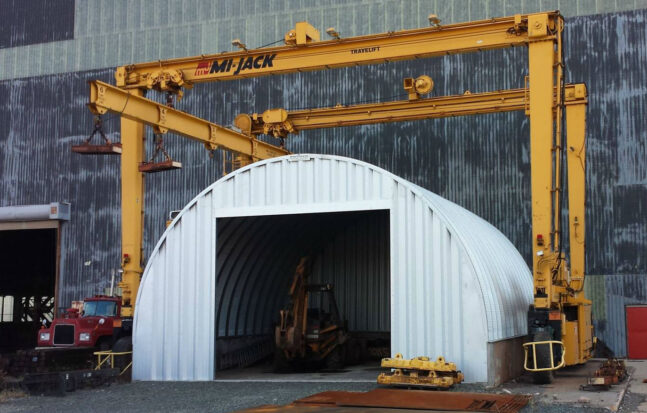
Why are modern arches typically made of steel?
Modern steel building architecture that uses the classic arch design makes current buildings both beautiful and structurally sound. Further, adding an arch to a building can be a great way to add a unique element to an otherwise traditional design.
What’s an example of modern architects using arch-style buildings?
The structures that would easily be deemed examples of good architectural design and a host of other buildings that have changed the landscape of modern architecture.

